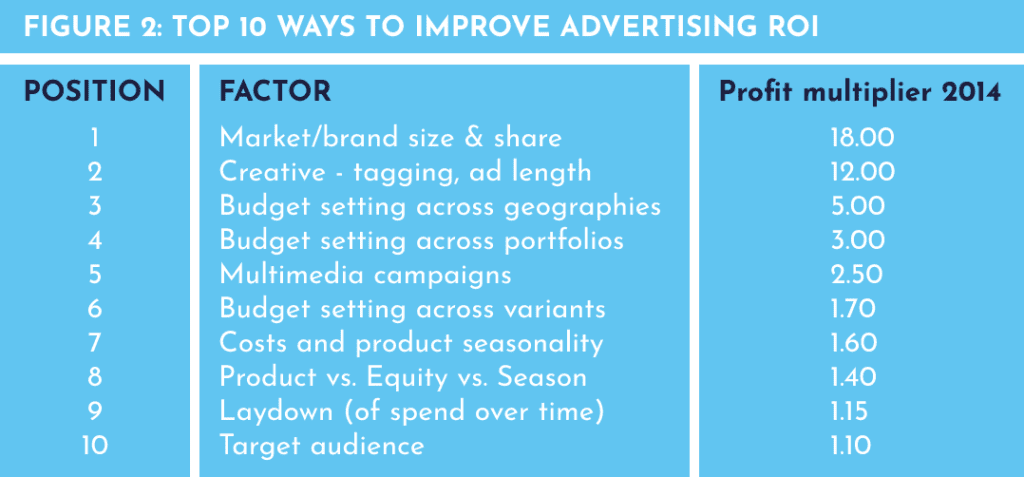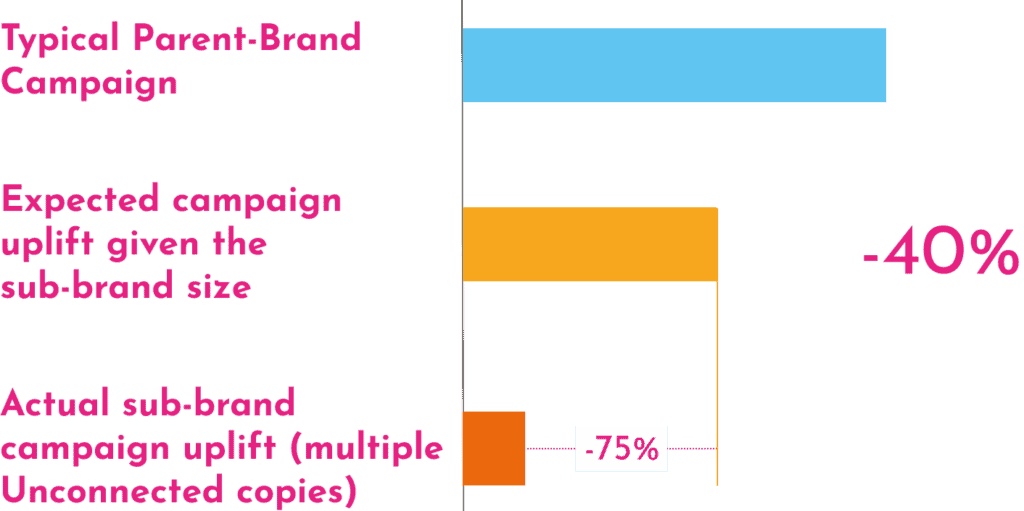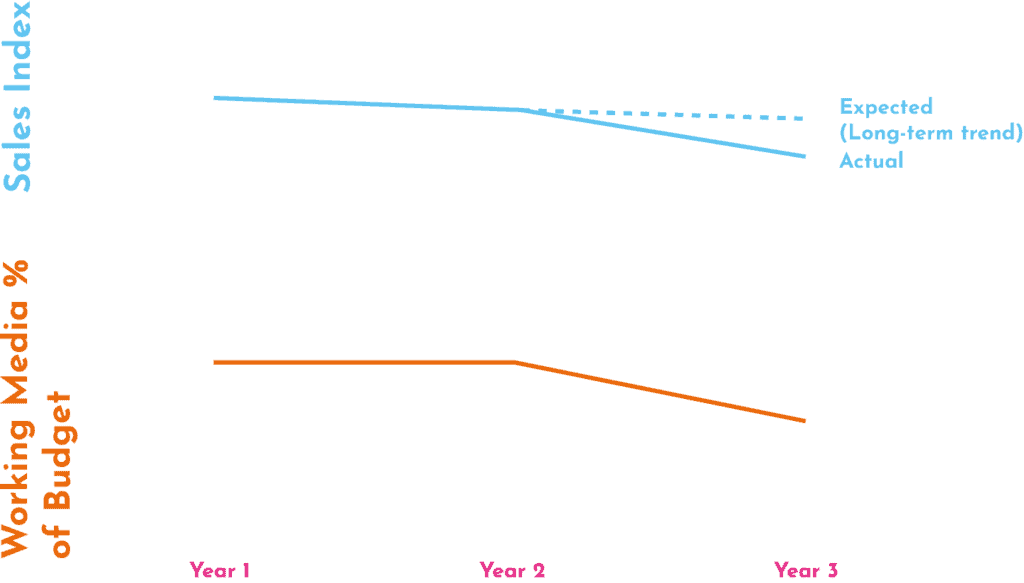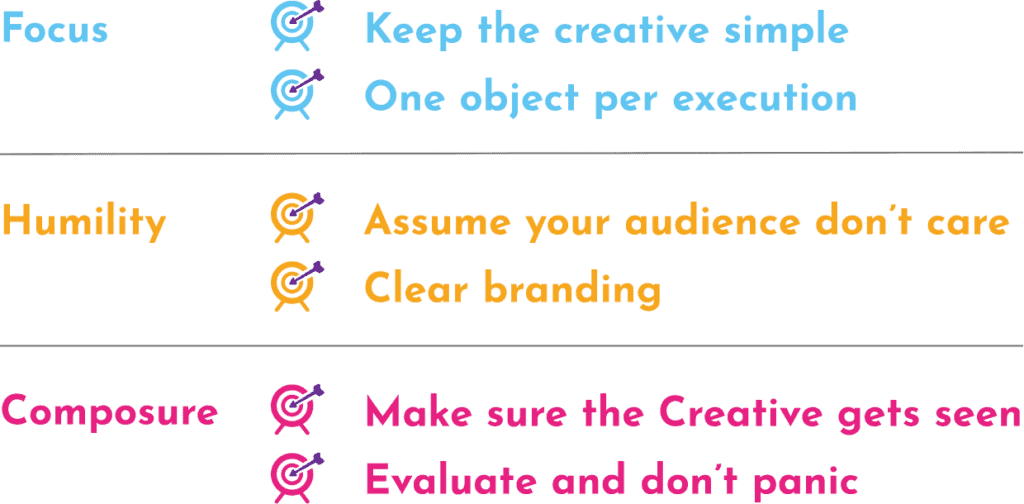The marketing award season is in full swing. Hurrah. At this time of year, we see the release of interesting research and case studies celebrating the best from the industry. And whilst there’s plenty we can learn from the award-winners, there’s just as much we can discover by looking at campaigns that went wrong[1]. And one area I’m going to investigate here is Creative…
[1] It makes sense that award winners do not represent all of marketing. Grace Kite, using the Advertising Research Council (ARC) database, found award-winning campaigns to enjoy ROIs of around 3.5 times higher compared to campaigns that did not win awards. See https://ipa.co.uk/news/arc-project
The Importance of Creative
By Creative, I mean the pure-content inside an ad. It’s what the potential customer experiences when exposed to your marketing.
You may already be familiar with the Top 10 Drivers of Advertising Profitability[2] from my former employer Data2Decisions. Paul Dyson, the D2D founder, highlighted Creative as the number 2 way to improve your advertising uplift.

With this in mind, what can we do to improve our Creative?
I wish I had the ‘secret sauce’ to share with you guaranteeing a high-quality Creative that wins awards and generates big commercial outcomes.[3]
There’s plenty of research out there – e.g. how quickly should a brand appear in an ad, use of colours and sounds – I’m going to leave that area well alone for this article[4]. But I can share some basic tips to avoid a poor-performing Creative. For client-confidentiality reasons (and just to avoid embarrassment) the following case studies are fictional, but based on real-life events I’ve experienced in the last 17 years.
[2] ‘Top 10 drivers of advertising profitability’ by Paul Dyson, Admap 2013. The first factor – market/brand size is arguably outside the marketer’s control in the short-term, making Creative the first thing to look at to improve your marketing.
[3] If I did I’d probably be spending my days enjoying the sun in Cannes rather than working through spreadsheets and code in Manchester.
[4] WARC, IPA and EBI all have written on this topic, amongst many others.
1. Focus
Keep each Creative simple
You’ll hear Creative agencies moan about the briefs they receive from clients[5]. If you ask too much from a single Creative execution, you’re less likely to achieve any of your objectives.
In this example, a retail brand was planning a TV campaign supported by Social Media. The brand wanted to attract more new customers. That was their primary objective. Full stop.
Well it should have been a full stop. But instead they also asked that the TV copy featured their new hero product. (This had been a coup to get in stock.) And finally they requested that the ad mention their upcoming promotion. And they only had budget for a 10-second copy.
The campaign generated 30% fewer sales than they typically get from a campaign with a similar budget.
New multi-objective campaign generated fewer sales

This drop in overall sales-performance might have been acceptable if the campaign had achieved its objective of generating new customers, growing the brand in the long-term.
But the campaign underperformed here too.
New Multi-objective campaign under-delivered on New Customers

It generated 40% fewer new customers compared to previous campaigns. Which meant it actually under-indexed on new customers.
It would be easy to blame the Creative agency, but their client was asking too much from them to deliver in one Creative. If the retail brand wanted their advertising to deliver on multiple objectives, then they needed more budget to allow for multiple Creative executions.
However, running more Creative executions won’t guarantee success, as we’ll see in our next case study…
[5] See Mark Ritson’s Marketing Week article on the importance of good briefs. https://www.marketingweek.com/mark-ritson-better-briefs/
2. Humility
Don’t ask too much from your audience
So if we agree not to overstretch the objectives of a single Creative copy, then we might look to multiple Creative executions – each fulfilling a different role. There is industry research which broadly agrees with this thinking. Binet & Field’s work on the balance between Brand and Performance marketing implies the need for multiple Creatives.[6]
But this approach can go wrong. In the following case, a brand was looking to launch a new sub-brand. They developed three TV copies in total. The longest TV ad was brand-focused – emotional and nostalgic, with the new sub-brand name only appearing at the end.
The other two copies were cold and rational. They focused on the new product itself, each short ad highlighting one specific benefit that this new sub-brand could give customers.
Multiple unconnected Creative executions under-performing

Unlike the last case, budget was not an issue. They ran all the copies at the same time, within the first three months of sub-brand’s launch. Unfortunately, the overall campaign results were underwhelming. (You might think – well hold on, new launch campaigns tend to drive smaller uplifts than campaigns for established brands. Even controlling for this, the results were disappointing.)
Individually the Creatives were weak. It was not clear from the brand Creative, what the new sub-brand product actually did. The shorter rational ads were better, but they lacked the warmth of the brand copy.
This approach might have worked[7] but the brand copy had no links to the two product ads, so the overall Creative approach to the campaign was flawed from the start. The Creatives were different stylistically – using different fonts, colours and music. The only thing in common was the sub-brand’s logo which only featured right at the end of the brand ad. Casual viewers could not make the connection.
The idea of ‘matching luggage’ has been on the marketing agenda for decades. Just how closely do your Creatives have to resemble one another is still being debated.[8] But for me, this is an example of a deeper issue. People do not care about your brand. It was arrogant to think potential customers would bother to mentally connect the emotional ad with the benefits of the rational ads when they looked so different.
Dragons’ Den star Steven Bartlett recently discussed the marketing behind his successful ‘Diary of a CEO’ podcast. He uses the Jenny-test[9]. Does your marketing cut-through to a fictional character called Jenny who has too much on her plate to care about your brand.
In a similar vein, the Ehrenberg-Bass Institute argues we should make the paradigm-shift from ‘rational involved viewers’ to ‘emotional distracted viewers’.[10]
Despite this consensus, it is a trap that practicing marketers still fall into far too often. It was such a shame too, as in this case the new product was actually quite good.
[6] See Binet & Field ‘Effectiveness in Context’ (2018) from EffWorks
[7] A recent study from Gain Theory & Meta recommends this approach. https://www.gaintheory.com/meta-research-why-ads-with-multiple-objectives-are-more-effective/
[8] https://www.campaignasia.com/article/time-to-bring-back-the-matching-luggage/451466
[9] https://www.marketingweek.com/steven-bartlett-marketing-indifference/
[10] The work of the EBI is prolific but this idea is introduced as early as the Preface of ‘How Brands Grow’ by Byron Sharp
3. Composure
Don’t panic
So far we have covered two cases where Creative issues undermined the potential of marketing campaigns. The logical thought would be that those brands should immediately develop new Creative approaches and abandon what has not worked.
At the same time, the rise of eCommerce and digital marketing has made Creative experimentation much easier. Serve a rotation of Creatives online, keep those that convert well and ditch those that do not. There are commercial gains to be had in this area. But for big, mass-reach campaigns swapping Creatives can be dangerous.
In this case study, there was an established brand which had enjoyed successful growth over several decades. Advertising and wider marketing had been a key factor behind its success; this brand enjoyed higher uplifts (relative to its size) from marketing compared to its peer group.
However, over the last two to three years, the brand had been facing a relevancy issue and was declining by about 5% per year. And the brand’s regular marketing efforts had been unable to reverse the decline.
By the third year of decline, the brand was considered to be in crisis by its parent company. The brand ran a completely new Creative idea. When the brand did not return to growth immediately they decided to run a third completely different Creative. And after a few months when they were not happy with the results, they ran another new Creative. All in all, there were three brand relaunches in that third year.
Whilst the total marketing budget was the same as previous years, the brand spent more money on developing these new Creatives and less on buying media spots (what is often called ‘working media’ or media-pressure).
Developing new Creatives reduced the marketing pressure behind the brand, hastening its decline

As the brand was so responsive to marketing, having less marketing out there meant that the sales dropped faster than in previous years, going from single to double digit decline.
On a personal note, I would be speaking to the marketing team in meetings over the course of that year and they looked absolutely shattered, working long hours to reset the brand again and again. Despite their best efforts, there was no way they could come up with a game-changing Creative to turn the brand around within three to four months.
Even if you accept that the first Creative was not successful[11], the brand could have gone back to an old Creative and kept the media pressure consistent with the previous year. The sales might have dropped by another 5%, but that would have been better than the double-digit decline they experienced. In turn that would have bought the marketing team time to properly regroup and come up with an outstanding Creative that would have a better chance of turning the brand around.
Quite simply you cannot expect a Creative to make an impact if no-one is exposed to it.[12]
[11] Arguably you need longer than three months to access if a big Creative switch is working.
[12] Stuart Heppenstall of D2D writes about Creative Commitment, again using ARC data to show that successful brands keep spending https://ipa.co.uk/knowledge/ipa-blog/how-creative-commitment-yields-higher-roi
Summary
Creative is the key factor under your immediate control to create bigger uplifts from marketing. And we covered three tips to avoid some of the mistakes that undermine the potential of Creative:

Whilst the secret to a guaranteed amazing Creative remains elusive, if you avoid these three traps you give yourself a chance of a campaign that generates large commercial uplifts. And you never know, you might even win an award to boot.
